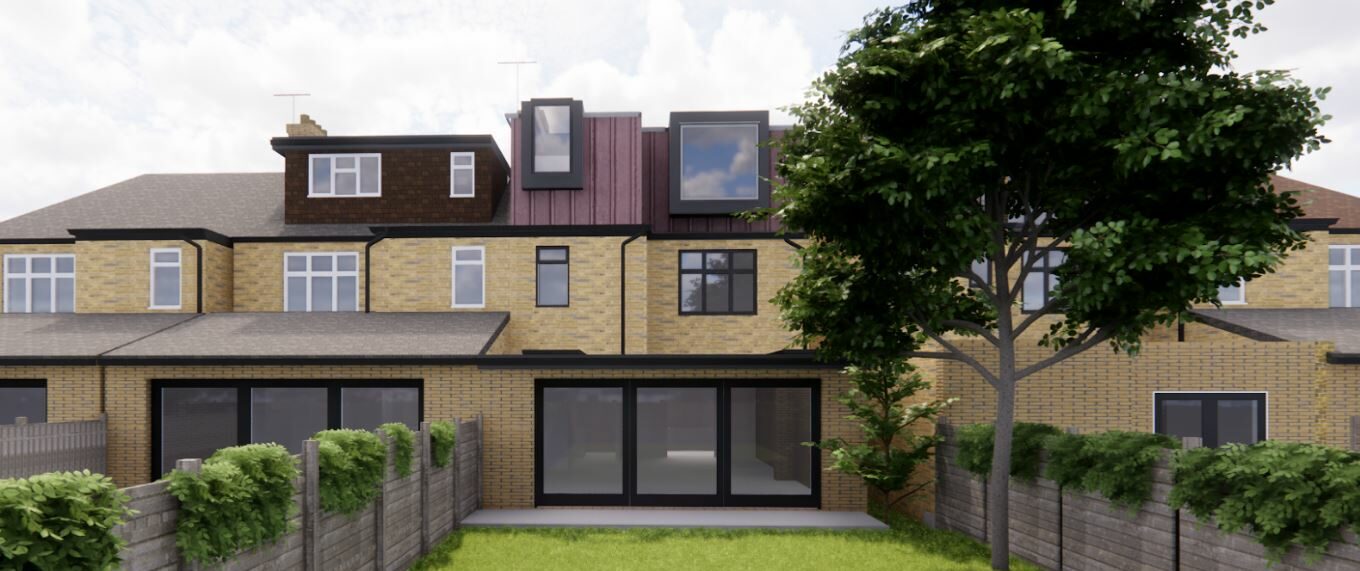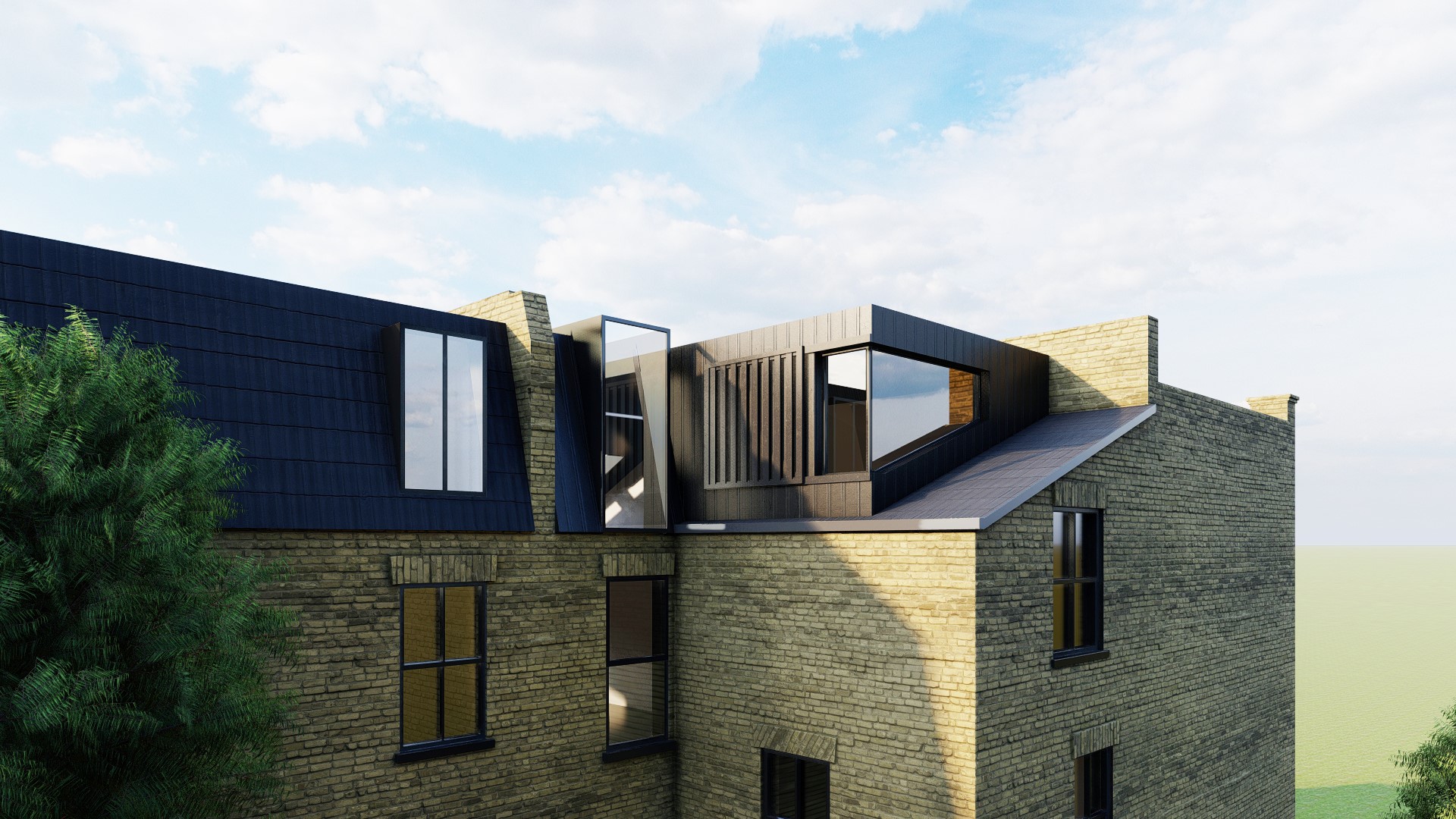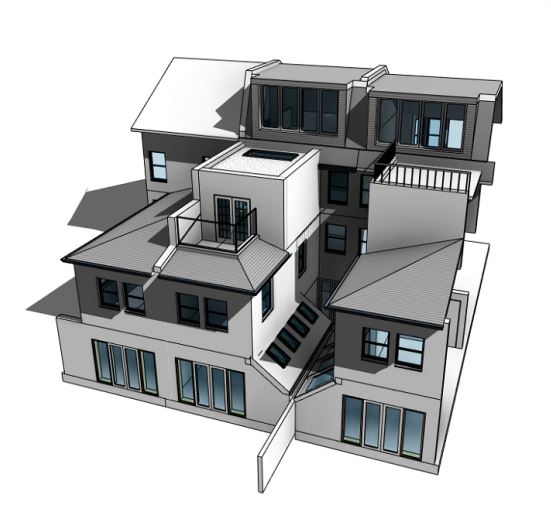Balcony Planning Rules for London
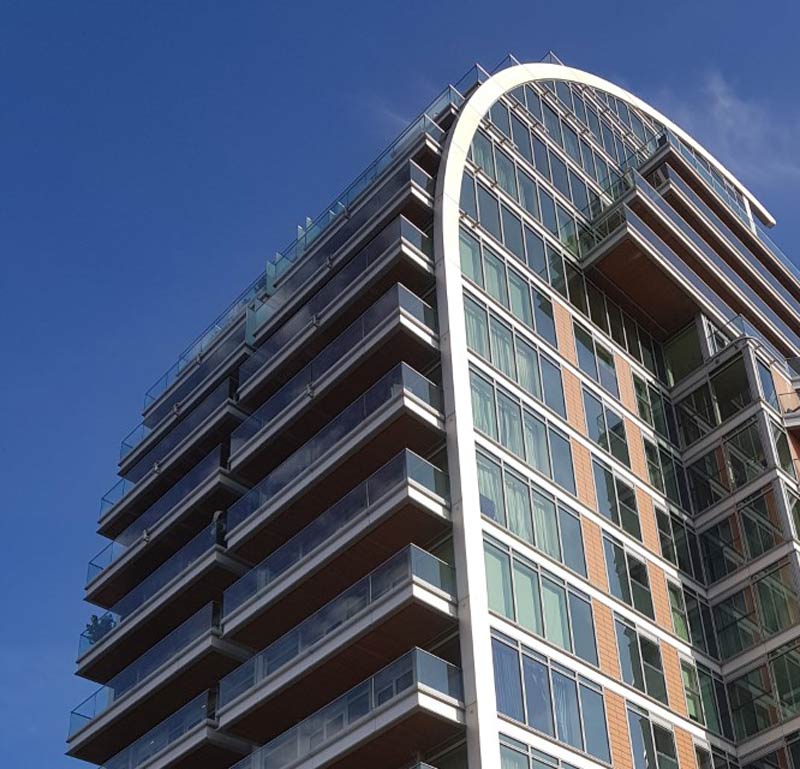 Rolling railings
Rolling railings
People who would like a balcony also wonder if it will need planning permission. In UK, the answer would mostly be ‘yes’ because raised platforms are not Permitted Developments. This is especially the case in conservation areas or where there is no precedent. Don’t be put off, because that entertaining space can add considerable value to your property. The cost of planning permission is therefore well worth the investment.
Some people worry that they won’t get planning permission, but if there are precedents and you get a professional architect in London to do a good design, you will stand a better chance. Your architect should also offer to submit the planning application on your behalf.
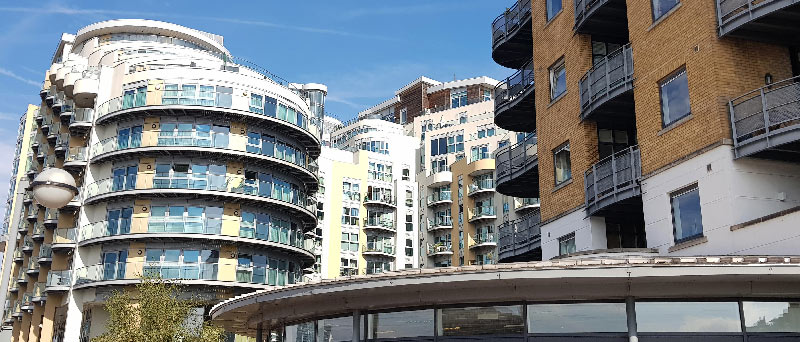 Prolific precedents
Prolific precedents
The design should be in keeping with the host building, respecting any traditional features. Any impact on your neighbours should be minimized as much as possible. This can be via positioning at the side or rear and / or using screens for their privacy.
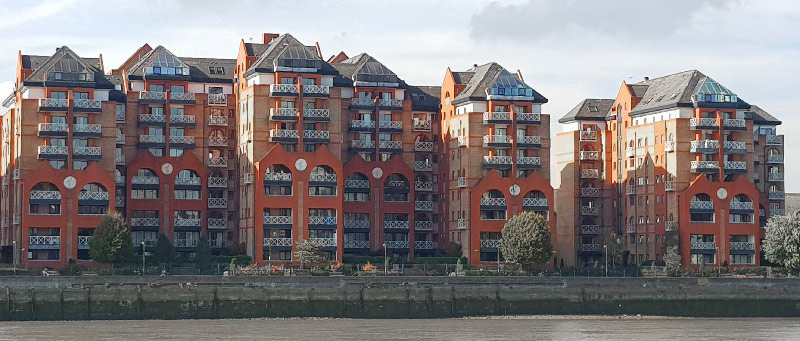 Water-fronts are good, since there cannot be an issue with overlooking.
Water-fronts are good, since there cannot be an issue with overlooking.
Loss of light can be caused by overhead platforms which are solid. This concern can be solved with a perforated metal deck, which also caters for rainwater drainage. Safety is a clear concern so the rail must be 1.1m high or over, and the gaps should be less than 10cm across.
You can check with your architect for any recent updates to balcony rules. If your application is refused, you will be given details and recommendations. You can then make the changes and a fresh application.
Juliet Balcony Planning Permission
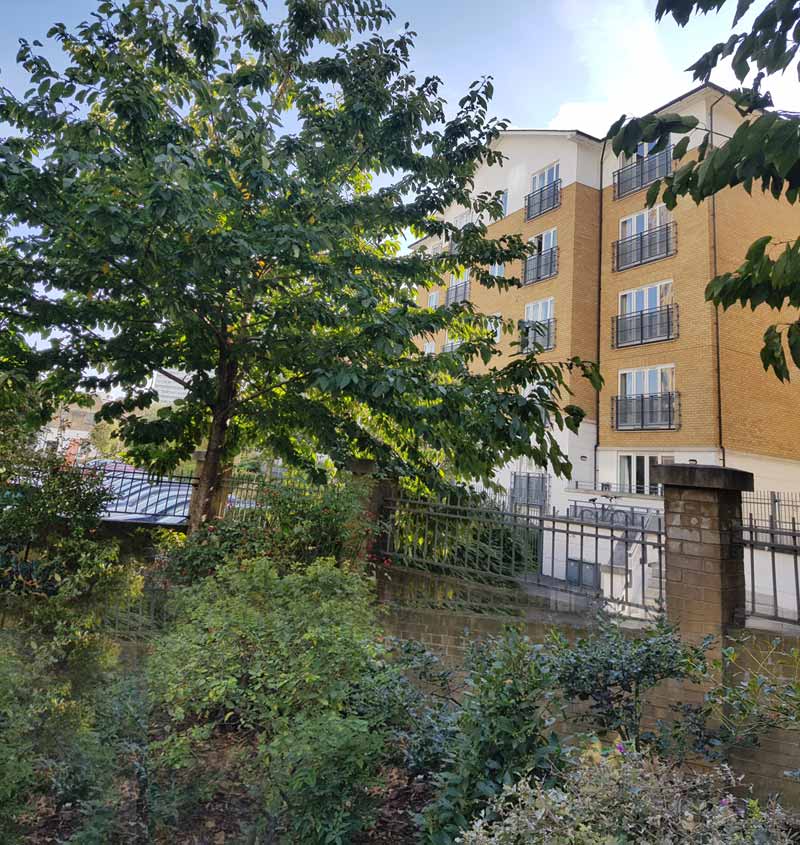 A job lot of juliets.
A job lot of juliets.
Most Juliet balconies can go under Permitted Development and should not need full planning permission. The good thing about a Juliet balcony is that you can replace your windows with French doors and a wrought iron rail, letting in more sunlight and breeze. It is liberating to throw open your doors and look out upon the world.
The name was clearly from Shakespeare’s Romeo and Juliet, where their tragic love consisted of serenades. Juliet had only to come to the aperture, so there was no need for it to be spacious. French balconies are even smaller, with the rail directly behind the glass.
The downside is that you can’t sit out with a table and chairs, or create a raised garden. If your balcony has even a skinny floor area, no matter how slim, it will not be a Juliet balcony and will need permission as a raised platform.
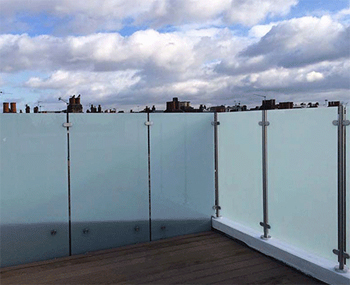
Balcony overlooking neighbour?
The main contentions with applications for roof terraces include:
- overlooking
- overshadowing
- safety
- a lack of precedence
- being in a Conservation Area
- being a Grade I or II Listed Building
Building a balcony
Overlooking can be addressed via appropriate screening (also increasing safety). For safety concerns, the rail has to be a minimum of 110cm high, and the gaps between the rails cannot be too wide (clearly for the safety of children.)
Beauty and Value
Balcony doors that open onto a reasonably sized roof terrace can transform a flat’s functionality in all fine weathers. It can be used to host visitors, to unwind or even to work. You may be surprised to learn that it can increase the value of your flat by up to one quarter, rendering it a sound investment. Build costs and council planning fees will be relatively low, compared to larger structural developments.
Planning applications are generally more con-tentious if they are going to affect the streetscape, and would consequentially be less so at the rear of a property in the case of a dormer or extension. However, this is not a ‘given’ with balconies, due to overlooking issues. For this reason, blocks where all the flats were built with balconies tend to feature them on the side or at the front, and not to the rear.
FAQs
Do I need Planning Permission for my Balcony?
This is one of our most FAQs. The answer is usually ‘Yes’, because it affects the exterior of your property. Balconies are in the ‘platforms’ category: think roof terraces or high level decking. Anything above 30cm is not a Permitted Development – but do not be deterred – because balconies are desirable features for resale too.
Is there a way to avoid getting permission?
Platforms under 300mm high will not need a permission. But who would have this? This could only apply to decking that is under 30cm off the ground, and many decks are higher than than this. The other way to avoid it is with a Juliet balcony.
What about Permitted Development?
Balconies usually create enjoyable spaces, al-though this depends on the size. For example, a Juliet Balcony lets light and air in through the new French Doors, with a rail to look over (as Juliet did when Romeo came to call). But the Juliet Balcony adds no space – and for this reason – is usually considered a Permitted Development. But balconies adding even the smallest space will be viewed by Planning Officers as raised platforms, and won’t be PD.
What next?
Once you have your planning permission, you may need Building Regulations Drawings for Building Control, if needed. Next steps after that could be to ask your architect if they can tender the build, which should save on building materials via their trade discounts. For peace of mind, you could also check if they offer contract admin-istration or project management services to handle your builders.
I live in a Conservation Area.
You would probably need to instruct a Design and Access statement in support of your application. It is also recommendable to take the pre-planning application route.
Can I avoid enforcement?
Ask an architect or planning consultant to guide you regarding a retrospective planning application, and to help you to make it too.
I was refused, help!
If you have been refused, send your architect the correspondence so they can address the issues with a fresh application.
How long will my application take?
The Local Planning Authority should decide your case within about 8 weeks.
Hire a Consultant for Balcony Planning
Given the instances of contention mentioned above, we strongly recommend you hire a planning consultant to maximise your chances of gaining planning consent first time. They can guide you regarding precedent cases and your local planning policies.
Professional Drawings for Balcony in London
We also recommend that you hire an architectural designer to get you a great design which is likely to pass. You need professional architectural elevations, sections and floor plans to dem-onstrate both existing and proposed states, to match the style of the building and the area. 3D Immersive Renders will also strengthen your proposal when it is placed before the Planning or Conservation Officer.
A One-stop Shop
Extension Architecture has planning and arch-itectural specialisms under one roof, giving you the advantages of a ‘one-stop shop’. They can commission a report-writer to create a Design and Access Statement in support of your application, if you live in a Conservation Area.
The architectural designers can submit the application and liaise with planning officers on your behalf. For your convenience, we take the site survey fee with 50% of your drawings fee then a technician will take measurements. The re-mainder is invoiced only when you are happy with the design. They can guide you regarding the planning department’s permissible timeline. Even though LPAs tend to be busy, they should not exceed the minimum of 8 weeks, since balconies are small projects.
What Documents Do I Need to Submit for Balcony Planning Permission in London?
The following is a list of documents you will need to have ready when you submit you application.
The planning application for the balcony and the fee, it is also worth having several copies so you can send them to the relevant parties for their records.
The certificate of ownership so the planning application can be processed without any delays.
Elevations and cross sections your property and the changes you are looking at being made.
For the proposed work you are carrying out you will also need a design and access statement.
What Will The Planning Officer Look At?
All local councils are different but the following is a guide that balcony planning permission normally falls into.
The impact on your neighbours. With balconies this may encroach on your neighbours privacy so they will look at the best position to prevent this.
Match the design and period of your property. This is to keep inline to match the rest of your property and not impact the area you live in.
Fall prevention. Requirements must be met to meet the minimum height requirements for balconies being added to properties.
Loss of light. If you are in a property above your neighbour you may be required to have perforations in the base of the balcony so loss of light does not impact those in the lower property.


